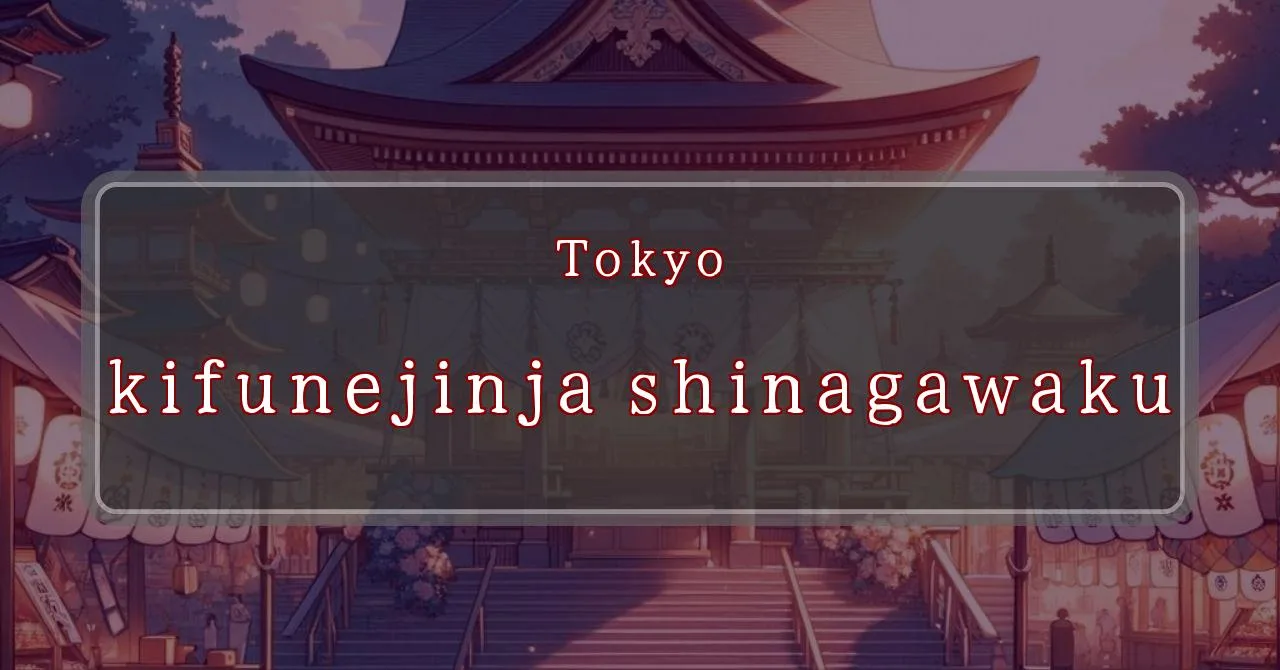Divine illumination at Shinagawa’s summer festival
Basic Information
- Name: Kifune Shrine
- Address: 3-16-31 Nishi-Shinagawa, Shinagawa-ku, Tokyo
- Phone Number: 03-3493-6761
- Access: 10-minute walk from Osaki Station on the JR Yamanote Line, Rinkai Line, or Toei Asakusa Line
- Festival Days: June 7th (Fri) to June 9th (Sun), 2024
Main Events and Attractions of the Festival
The Kifune Shrine Festival is a lively and colorful event that attracts many visitors each year. Some of the main events and attractions of the festival include:
Mikoshi Procession
One of the highlights of the festival is the mikoshi procession. A mikoshi is a portable shrine that is carried through the streets by a team of people. The Kifune Shrine mikoshi is a large and elaborate structure that is decorated with colorful tapestries and streamers. The procession is accompanied by music and dancing, and it is a great opportunity to experience the vibrant atmosphere of the festival.
Kagura Performance
Kagura is a traditional Japanese dance that is often performed at Shinto festivals. The kagura performance at the Kifune Shrine Festival is a beautiful and graceful dance that tells the story of the shrine’s founding. The dancers wear colorful costumes and masks, and the performance is accompanied by music and singing.
Food and Games
There are also a variety of food and games available at the festival. Visitors can enjoy traditional Japanese dishes such as yakitori, takoyaki, and okonomiyaki. There are also a number of games and activities for children, such as goldfish scooping and ring toss.
Fireworks Display
The festival concludes with a spectacular fireworks display. The fireworks are launched from a nearby park, and they light up the night sky with their brilliant colors. The fireworks display is a fitting end to a lively and enjoyable festival.
Blessings and Deities
Kifune Shrine is dedicated to the deities Takao Kami and Susanoo no Mikoto. Takao Kami is the god of rain, wind, and agriculture, while Susanoo no Mikoto is the god of the sea and storms. Both deities are important figures in Japanese mythology, and they are revered for their power and protection.
Visitors to Kifune Shrine can pray for blessings in a variety of areas, including:
- Good luck
- Prosperity
- Good health
- Safe travel
- Success in business
- Fertility
The shrine is also a popular spot for couples to pray for a happy and lasting marriage.
Origin and History
The origins of Kifune Shrine are unclear, but it is believed to have been founded in the 8th century. The shrine was originally located in a different part of Shinagawa, but it was moved to its current location in the 17th century.
Kifune Shrine has a long and rich history. It has been visited by many famous people over the years, including the shogun Tokugawa Ieyasu and the emperor Meiji. The shrine has also been featured in several works of literature and art.
Tips and Notes for Visitors
Here are a few tips and notes for visitors to Kifune Shrine:
- The shrine is open every day from 9:00 AM to 5:00 PM.
- Admission is free.
- There is a small parking lot available for visitors.
- The shrine is a popular spot for weddings and other ceremonies, so it is best to avoid visiting during these times.
- Photography is allowed inside the shrine, but please be respectful of other visitors.
Parking Information
There is a small parking lot available for visitors to Kifune Shrine. The parking lot is located next to the shrine, and it can accommodate about 20 cars. The parking fee is 500 yen per day.
If the parking lot is full, there are several other parking options available nearby. There is a public parking lot located a few blocks away from the shrine, and there are also several private parking lots in the area.
Popular Stalls and Food Carts in Recent Years
| Type of Stall | Description |
|---|---|
| Takoyaki | A staple at Japanese festivals. Characterized by a crispy outside and a creamy inside. |
| Jaga Butter | A simple yet popular snack of hot potatoes lavishly topped with melted butter. |
| Baby Castella | Small castella cakes, sweet and fluffy treats enjoyed by children and adults alike. |
| Grilled Ayu with Salt | Fresh ayu fish grilled whole with salt, a savory taste of Japanese summer. |
| Shaapin | A unique gourmet item influenced by foreign cuisine, with a chewy skin wrapping the filling. |
| Okonomiyaki | A Japanese grilled dish where you often choose your own ingredients for a personalized flavor. |
| Cotton Candy | A fluffy, sweet snack that’s extremely popular with children. |
| Chocolate Banana | A banana coated in chocolate, a fun and visually appealing dessert. |
| Kushiyaki | Various types of ingredients skewered and grilled, an easy-to-enjoy snack. |
| Yakisoba | Fried noodles mixed with a special sauce, a fast food favorite in Japan. |



